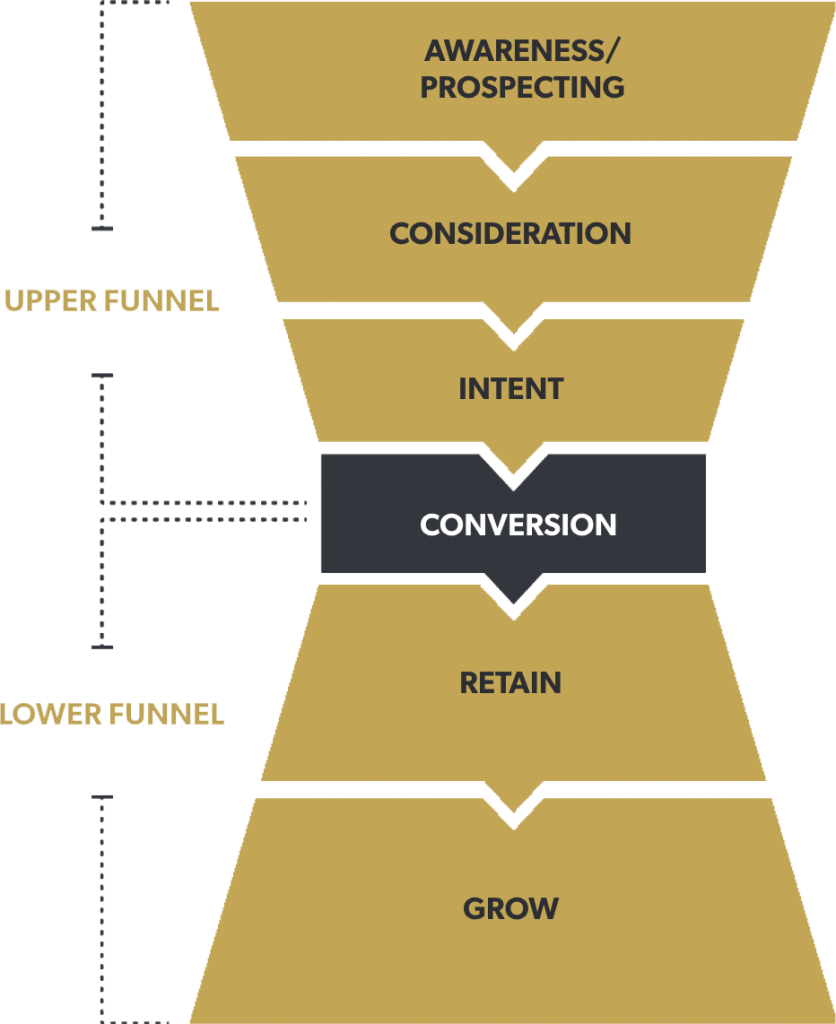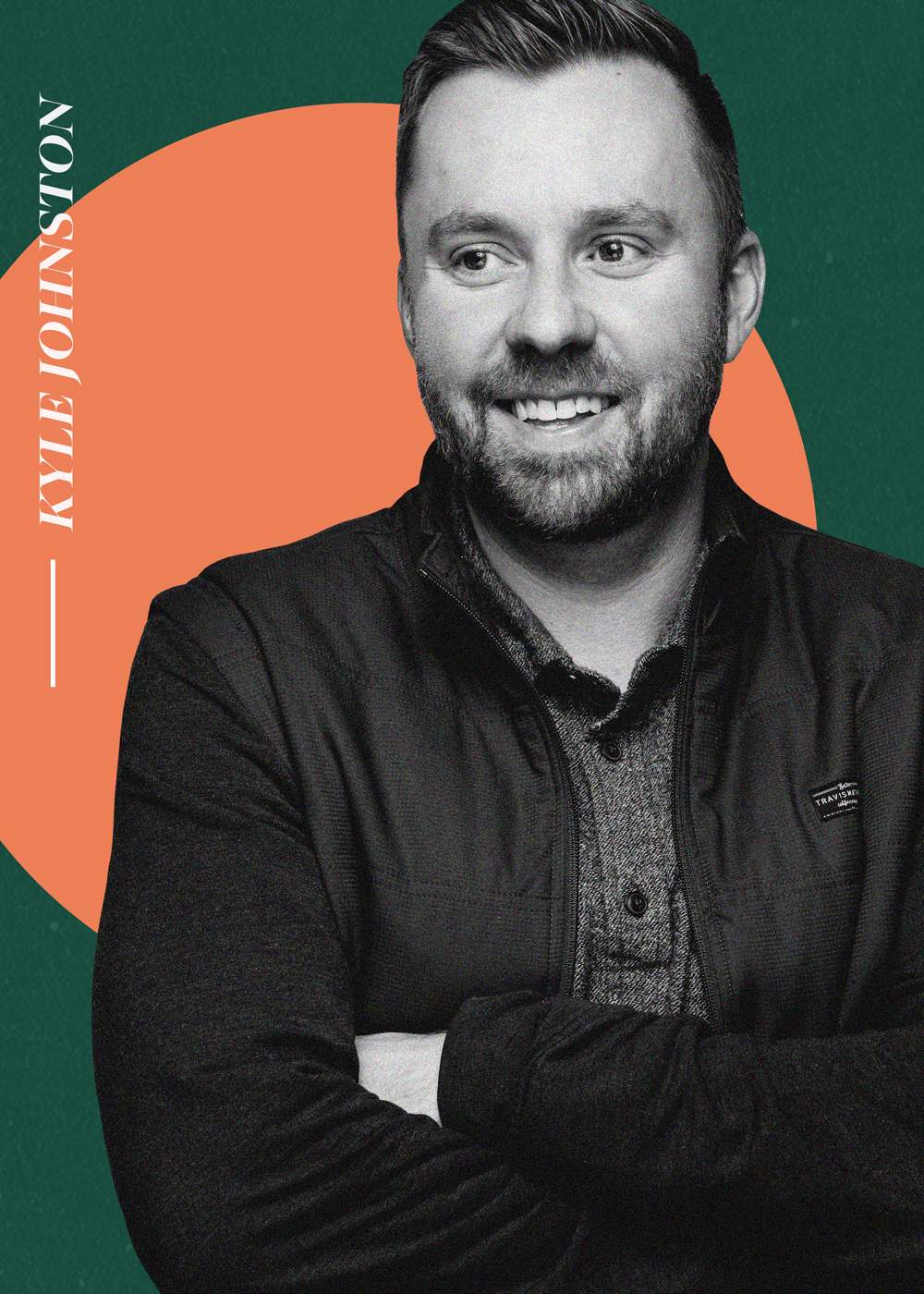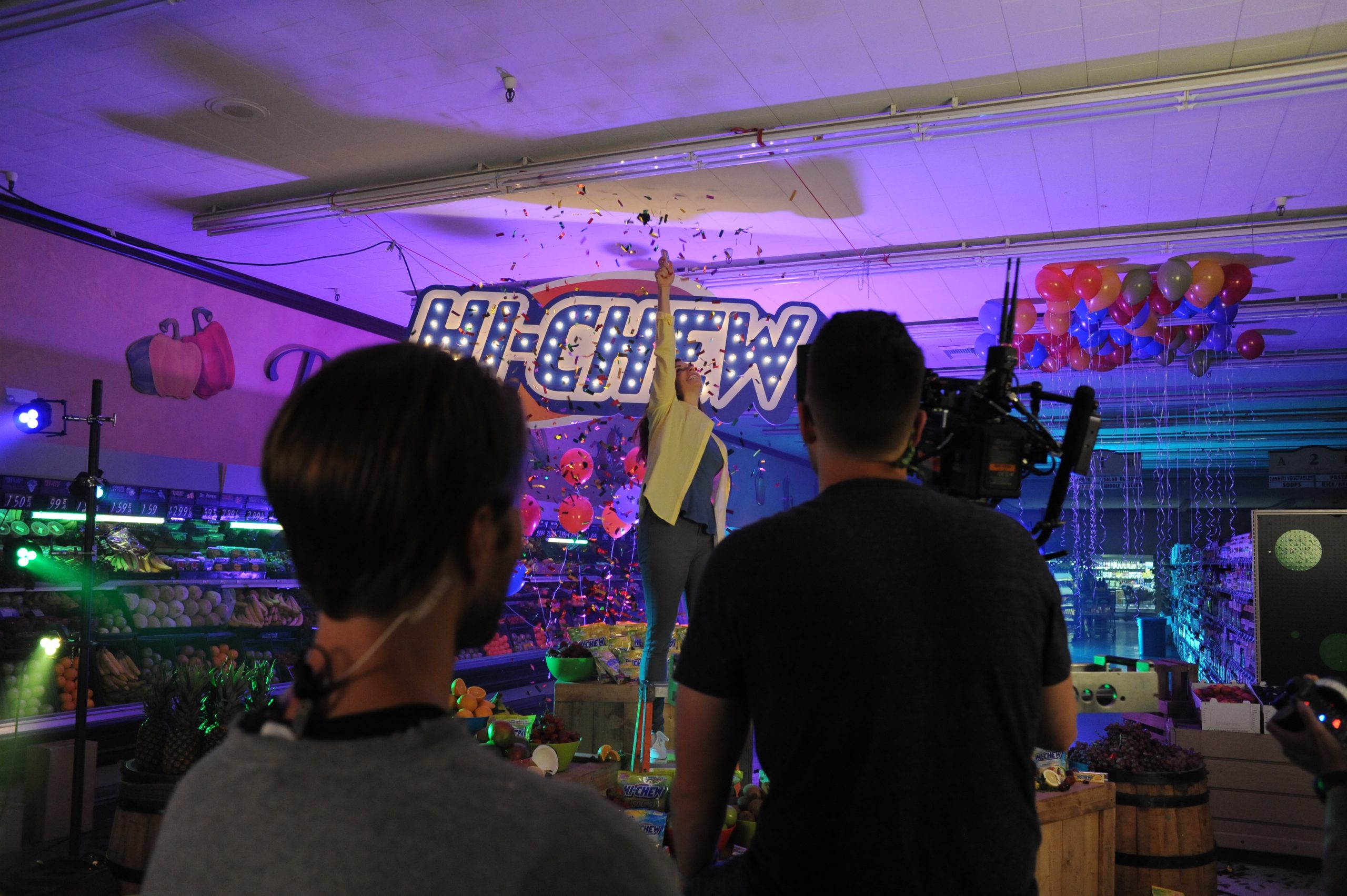Whenever I hear fellow media planners and strategists talk about the consumer journey, the conversation seems to end at the purchase. When a transaction takes place, they believe they achieved the ultimate goal. (Yay! A positive return!)
This is why they are good marketers and not great marketers.
At Gigasavvy, we approach media strategy by looking at the entire customer journey. We are talking about the full-funnel marketing here, not the half-funnel.
So what does that mean? Well, we ensure that our strategies go beyond the purchase — creating continual growth of a brand by not just optimizing towards the low-hanging fruit, but by treating the customer journey as a circle rather than a line. To us, this brand strategy is the best way to initiate brand growth, and answer these questions:
- What is full-funnel marketing?
- Why is full-funnel marketing important?
Full Funnel Marketing: Understanding + Strategy = Growth
A full-funnel marketing strategy observes each step of the customer journey, targeting opportunities where the brand can interact with their potential customers in an engaging and effective way. This approach ensures that a brand guides a potential customer from initial awareness, through purchase, and continuing to facilitate a long-term, high-value relationship.
To put it simply — full-funnel marketing strategies foster lifelong customers and brand growth.
If the potential opportunity is tremendous, why isn’t every business developing their marketing strategy this way? One potential obstacle is understanding what media channels are out there, and where each media channel’s offerings fit within the scope of this customer journey.
What does full-funnel marketing look like?
It’s funny how marketers always refer to this customer journey a funnel, when in reality it functions more as an hourglass. Full-funnel marketing looks at both sides. Let me explain:

A sales funnel doesn’t end at conversion.
Acquisition
There are two main parts to the customer journey. The first part is the acquisition of a customer. This stage begins with brand awareness, funnels down to brand or product consideration, and lands on consumer intent before resulting in a purchase. This is what most businesses focus on – acquiring new customers to grow the business quickly.
When breaking down each section of the acquisition portion of full-funnel marketing, marketers define the media channels and their functions as high-, mid-, and low-funnel.
High-funnel actions are considered to focus on brand awareness. Television, radio, out-of-home (OOH), display and social prospecting reach a predetermined audience that is not yet in-market for the product the brand is promoting. Typical key performance indicators (KPIs) for this stage are:
- Impressions
- Reach
- CPM
- Brand lift
- Increased site traffic
The next step within the acquisition part of full-funnel marketing. This is when potential customers are now aware of the brand and are in-market for the type of product it sells, but are not yet committed to the purchase.
Media used to reach consumers during this phase include display and social retargeting, non-brand paid search and shopping campaigns, SEO, and automated email. Here, the strategy should function in a way that keeps the brand top of mind as consumers weigh their options for purchasing. Some businesses may develop tailored creative that works to keep the user engaged – this may include specific messaging regarding promotions or product they have already viewed. KPIs include:
- Clickthrough rate (CTR)
- Cost-per-click (CPC)
- Sessions level metrics (pageviews, time on site, bounce rate)
- Conversion rate
The final stage before a user purchases is called the “intent” stage. This is when a consumer knows that they are going to purchase from the brand, but they may be waiting for specific opportunities before completing the purchase. These opportunities could range from waiting for promotional periods to waiting for payday. Have you ever noticed that you receive a ton of promotional emails around the 1st and the 15th of each month? That is no coincidence!
The channels marketers typically use to engage with this audience are branded paid and organic search, and promotional emails. Given that this is the last step before purchase, KPIs are typically:
- Conversions
- Conversion rate
- Return on ad spend (ROAS)
When all of these marketing channels work efficiently and cohesively, then it can result in sales growth for the brand. Super exciting, right? It makes you want to congratulate your marketing team on a job well done and maintain this strategy until the end of time…
Except that only focusing on high-, mid-, and low-funnel acquisition will not sustain growth.
Full-Funnel Marketing: Retention + Growth
Arguably the most important part of full-funnel marketing is what happens after the purchase. This section of the “hourglass” is defined by customer retention and audience growth, and can help set a brand up for continued success.
Retention marketing is really just continuing to engage users who have already completed a valuable action with your brand – whether that is a purchase or another KPI. Whenever a marketing team describes the lifetime value of a customer, they are talking about the amount of opportunity a single customer has to continue to engage with the brand.
Retention is vital to a successful marketing strategy. We often think of those valuable users as frequent purchasers who are brand loyal. But more often, they are one-time converters who need a little bit of a push to keep coming back. Re-engaging these customers can strengthen and stabilize a brand’s revenue growth, and more importantly, provide valuable 1st party data that can be used to exponentially increase revenue.
This brings us to the “last” stage of the marketing funnel: growth. I say “last” because this step can be seen as the first step towards reaching out to a new, untapped audience. Growth focuses on marketing to users who exhibit Internet browsing behavior similar to your current and recurring customer base. During the growth stage, you are reaching users who are higher quality, resulting in more opportunity to increase revenue without wasting valuable marketing dollars on users who may not have an interest in the business.
It is kind of like flipping the hourglass and starting the process all over again, but this time you are utilizing powerful data to make more informed targeting choices. This is where true growth begins.


